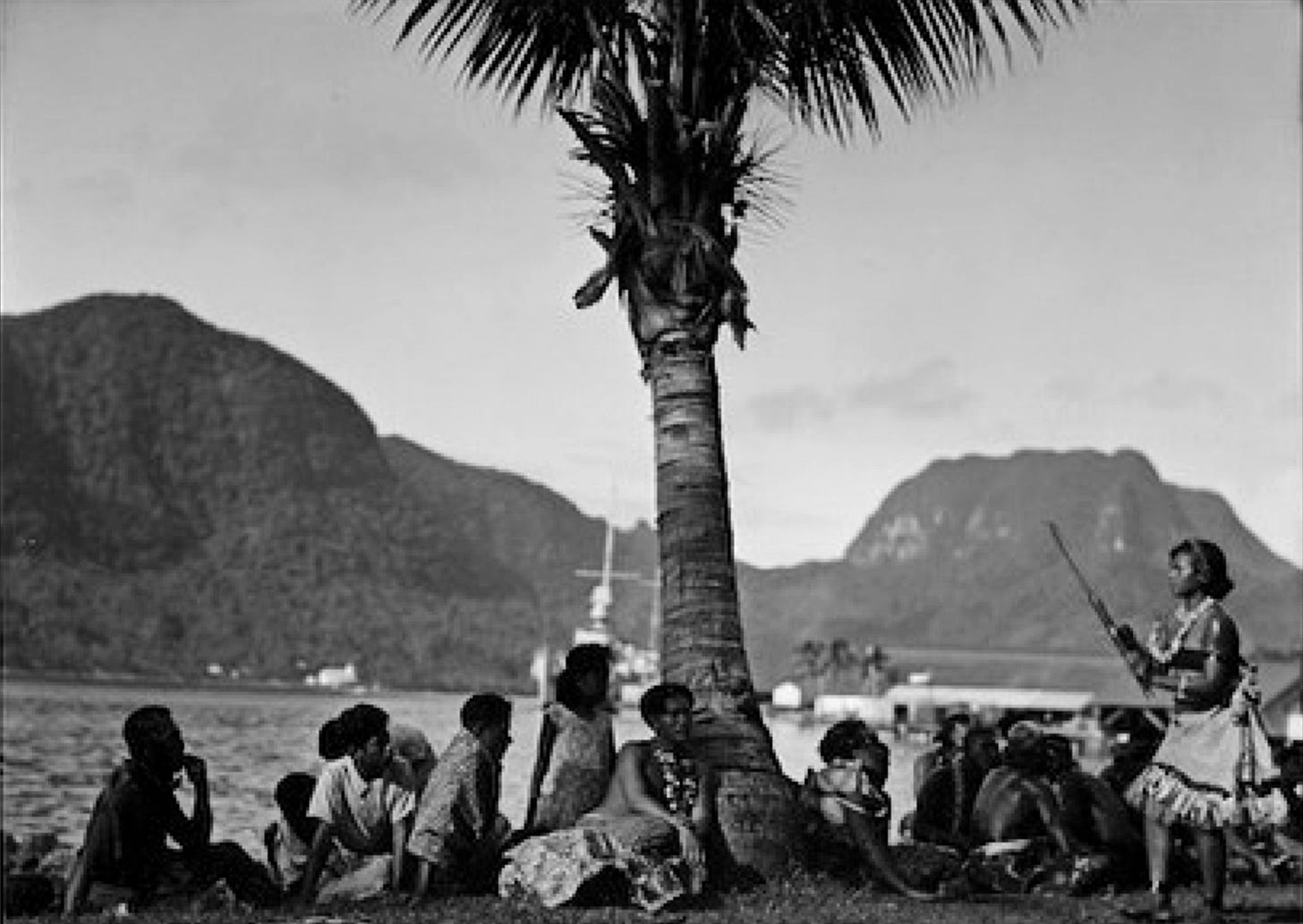Anthropologist and another general
Invincible Strangers 59 Chapter 27.1
In 1909 the holder of the chiefly ali’i title Tui Manu’a died, prompting Governor John Parker ordering an end to its bestowal.
As it was royal in nature, it could not exist in the United States. This partly reflected a translation issue: across the Pacific ‘tui’ was mostly translated as ‘king’ to mean much the same as a European royal. This was not so. In July 1924 three of the senior tulāfale and an ali’i on Manu’a conferred the title of ‘Tui Manu’a’ on Christopher Taliutafa Young. Governor Edward Kellogg said it ‘smacked of conspiracy’. Ontario was ordered to bring Young and the three tulāfale – Taua-nu’u, Tulifua and Ti’a and the high chief Sotoa – to Pago Pago. Kellogg suspended Sotoa from his position as acting district governor and had Young placed under house arrest in Tutuila. The three tulāfale were defiant, saying they were ‘dissatisfied to the death’ with the way the navy interfered. American Sāmoa was fashionable in a semi-colonial academic world of anthropology. A team from Hawaii’s Bishop Museum, led by Albert Judd, were collecting data in the territory. He said most Sāmoans they met sympathised with the Mau. In 1926 a US magazine, The Nation, discussed ‘abuses and evils’ in American Sāmoa and drew attention to a letter that 344 Sāmoan chiefs had written in 1921 to the president, claiming ‘grievous wrongs’ against the Sāmoans by the navy. Another letter, signed by 971 people, complained that the chiefs and people of Tutuila and Manu’a were ‘forbidden to assemble to consider Sāmoan affairs and the welfare of the Sāmoan people’.
Keep reading with a 7-day free trial
Subscribe to Michael Field's South Pacific Tides to keep reading this post and get 7 days of free access to the full post archives.


